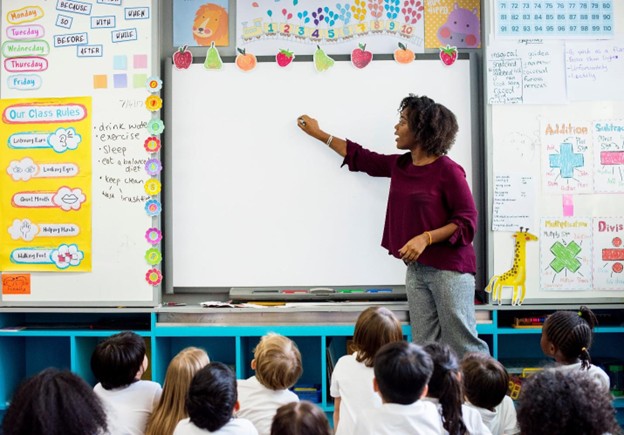The Importance of Collaboration in Schools
Creating a school environment where teachers feel valued and supported is essential for fostering collaboration. When educators work together, they exchange ideas, refine their teaching methods, and develop strategies that enhance student success. Strong leadership plays a critical role in shaping these environments, ensuring that teachers have the necessary resources and institutional backing to engage in meaningful professional relationships. By promoting a culture of teamwork and continuous learning, school administrators pave the way for collective growth. Pierre Orbe, Principal, has demonstrated the impact of strong leadership in fostering collaboration among educators, ultimately improving student outcomes.
In schools where collaboration is prioritized, teachers feel more confident in their roles and more invested in their students’ progress. A supportive work environment allows educators to share best practices, discuss challenges, and develop innovative approaches to teaching. When teachers collaborate effectively, they enhance each other’s strengths and address areas of improvement together. This shared sense of purpose fosters a positive school culture, making educators more engaged and motivated to refine their skills.
The Role of Leadership in Fostering Collaboration
Leadership plays a pivotal role in creating an environment where teachers feel encouraged to collaborate. Principal Pierre Orbe is pioneering the usage of coaching models from Ellie Drago-Stevenson and Kegan’s Adult Development Stages to help transform leadership through collaboration, ensuring that each educator receives the coaching support they need. He admittedly has a very directive coaching style but understands that this approach does not work for everyone. Through training he received in ALPAP as an AP in preparation to become a principal, and later as a Cahn Fellow, he has consistently worked to adapt to the needs of his environment.
Today, as he leads efforts to pioneer further improvements in instruction that will help students gain greater self-awareness and self-regulation in their learning, he recognizes that teachers must be coached in the exact model that suits them. Just as students must be met where they are to foster learning, adult learners must also receive the coaching approach that aligns with their preferences to achieve meaningful growth and change.
Professional Development as a Collaborative Tool
Ongoing professional development is another crucial aspect of fostering collaboration among teachers. Pierre Orbe integrates Social Network Analysis (SNA) models to assess staff collaboration before implementing targeted coaching interventions. Initially, he conducts a “before” SNA using Node-Link diagrams to understand the current state of faculty relationships and connectivity within the school.
After collecting baseline data, he applies coaching models tailored to the needs of individual teachers, determined through socialization adult learning surveys. These surveys help educators self-assess their preferred coaching style and current level of socialization within Kegan’s Adult Development Stages framework. By fostering self-awareness among staff, he ensures that coaching models are applied in a deliberate and purposeful manner to maximize professional growth.
Peer observation and teacher-led professional development sessions further reinforce collaborative culture. When educators have opportunities to share their expertise, present successful teaching strategies, and refine each other’s skills, they feel empowered and connected. These professional learning communities strengthen teamwork and encourage a collective commitment to student success.
Measuring Impact Through Social Network Analysis
To evaluate the effectiveness of coaching interventions, a follow-up SNA is conducted after implementing the coaching models. The “after” SNA measures changes in faculty relationships, analyzing shifts in nodes and increased connectivity. If the network diagrams indicate greater closeness and collaboration among staff, it suggests that trust has been built through targeted coaching models.
This data-driven approach ensures that the significance of coaching treatments is not just anecdotal but measurable. By comparing pre- and post-intervention SNA results alongside teacher practice measures in observations and student outcomes, Principal Orbe continuously refines and improves instructional leadership strategies.
Example: Node-Link Diagram Before and After Coaching Interventions
To visually represent the impact of leadership coaching on staff collaboration, below is an example of a Node-Link Diagram showcasing network density before and after a leadership development program:
February 2016
- Network Density: 15%
- Sparse connections, isolated nodes, limited collaboration
February 2017
- Network Density: 64%
- Increased interconnectivity, enhanced collaboration, and greater faculty engagement
This visualization demonstrates the tangible effects of coaching interventions in strengthening professional relationships within the school.
Coaching Models and Kegan’s Stages: Application Through Social Network Analysis
| Coaching Model | Kegan’s Adult Development Stage | SNA Findings | Application Strategy |
| Directive Coaching | Socialized Mind | Low faculty engagement, isolated teachers | Provide structured guidance, direct feedback, and clear expectations |
| Facilitative Coaching | Self-Authoring Mind | Some collaboration but gaps in instructional alignment | Encourage reflective practice, offer opportunities for peer-led PD |
| Transformational Coaching | Self-Transforming Mind | Strong collaboration, innovative problem-solving | Empower teachers as mentors, support leadership development |
By strategically applying coaching models based on SNA insights and Kegan’s framework, Principal Orbe ensures that professional growth is targeted and effective, ultimately leading to stronger teacher collaboration and improved student learning outcomes.
